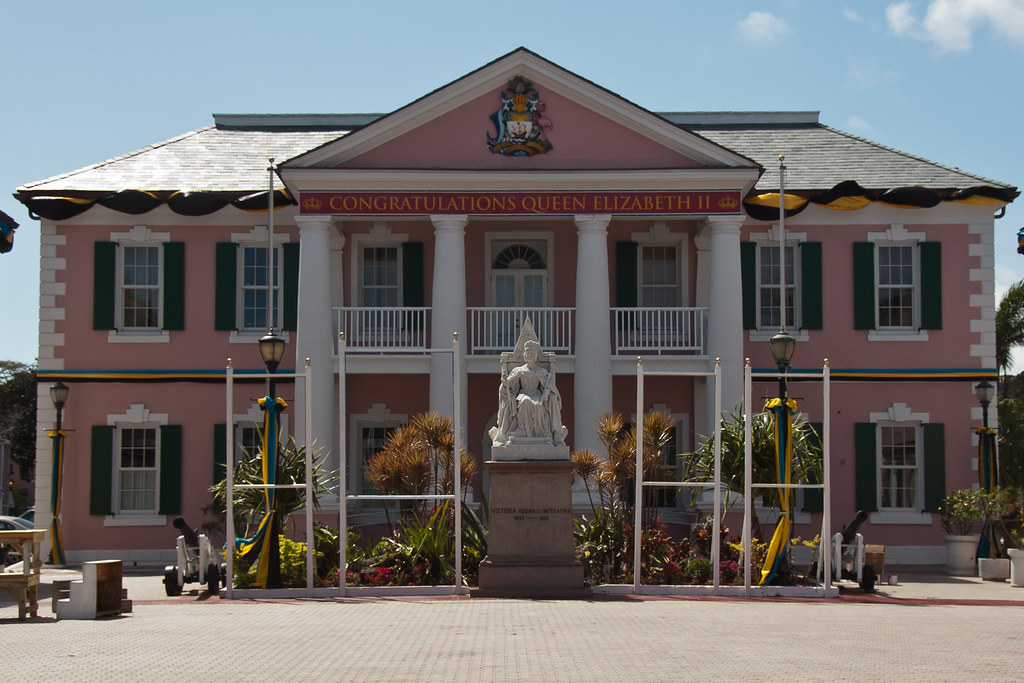
Above: Parliament Building - the decorations were in preparation for Prince Harry who was arriving a day after us!
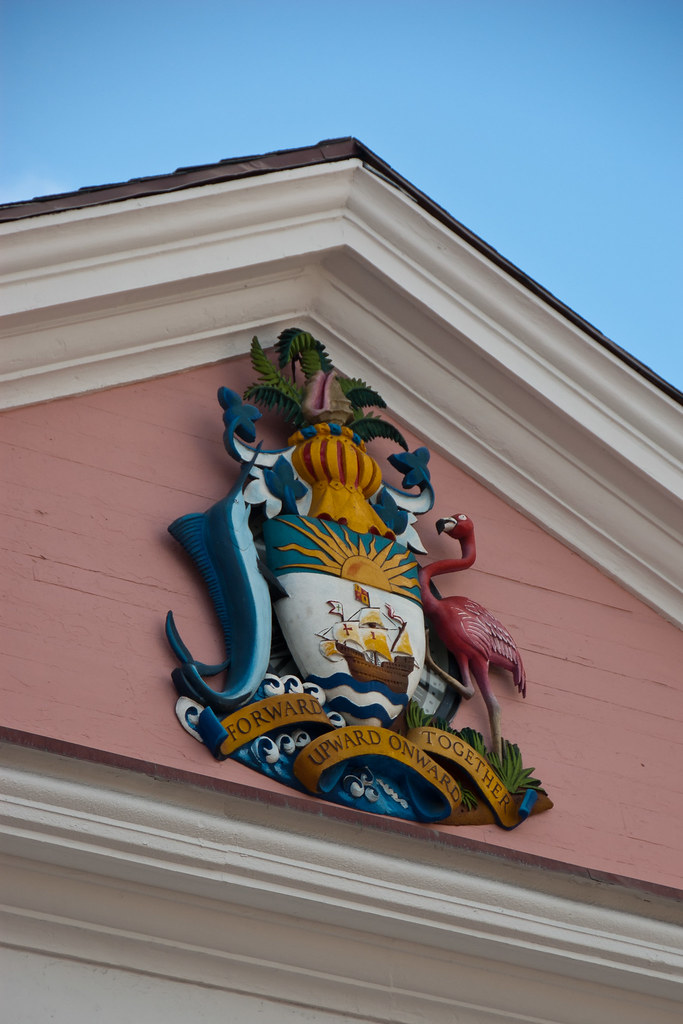
Above: The crest close-up.
The city is located on the island of New Providence, which functions much like a business district. Nassau is the site of the House of Assembly and various judicial departments and was considered historically to be a stronghold of pirates.
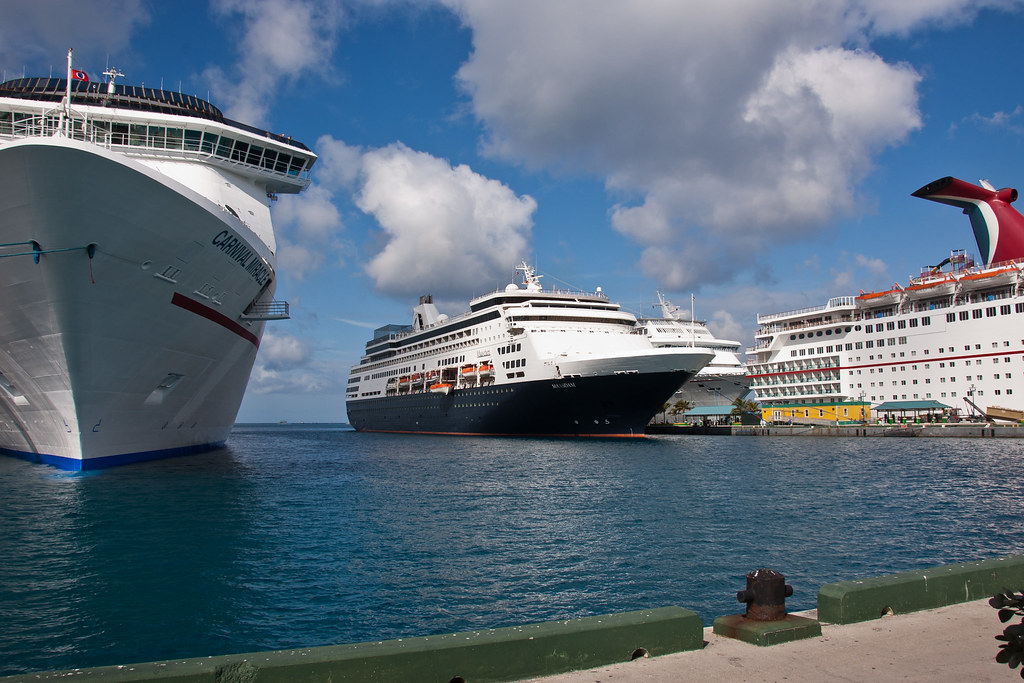
Above: Cruise ships docked at Nassau Harbour.
Nassau has an attractive harbour, a colourful blend of old world and colonial architecture, and a busy port. The tropical climate and natural beauty of the Bahamas, combined with the city's proximity to the USA, have made Nassau a popular tourist destination.
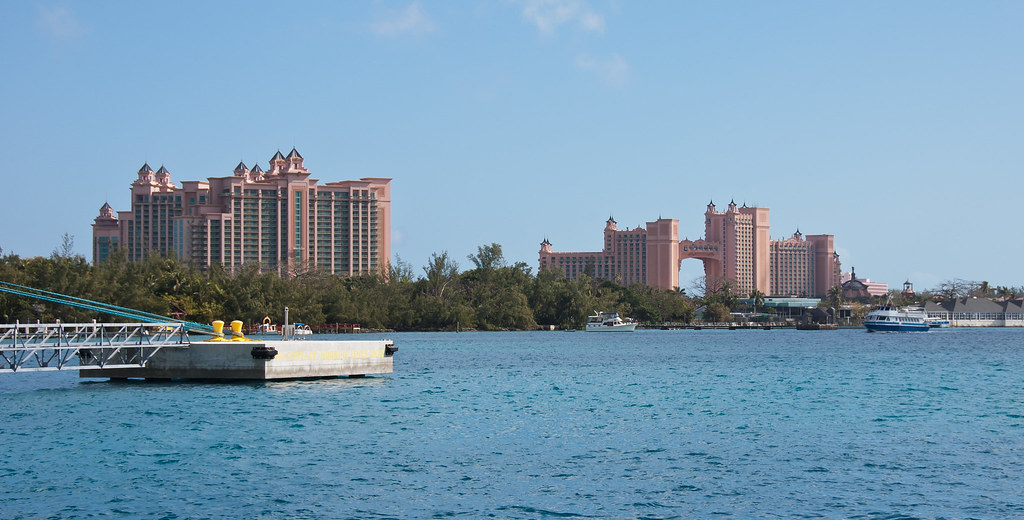
Above: The Atlantis resort on nearby Paradise Island accounts for more tourist arrivals to the city than any other hotel property.
Nassau was formerly known as Charles Town; it was burned to the ground by the Spanish in 1684, but later rebuilt and renamed Nassau in 1695 in honour of the Dutch Stadtholder and later also King of England, Scotland and Ireland, William III from the Dutch House of Orange-Nassau.
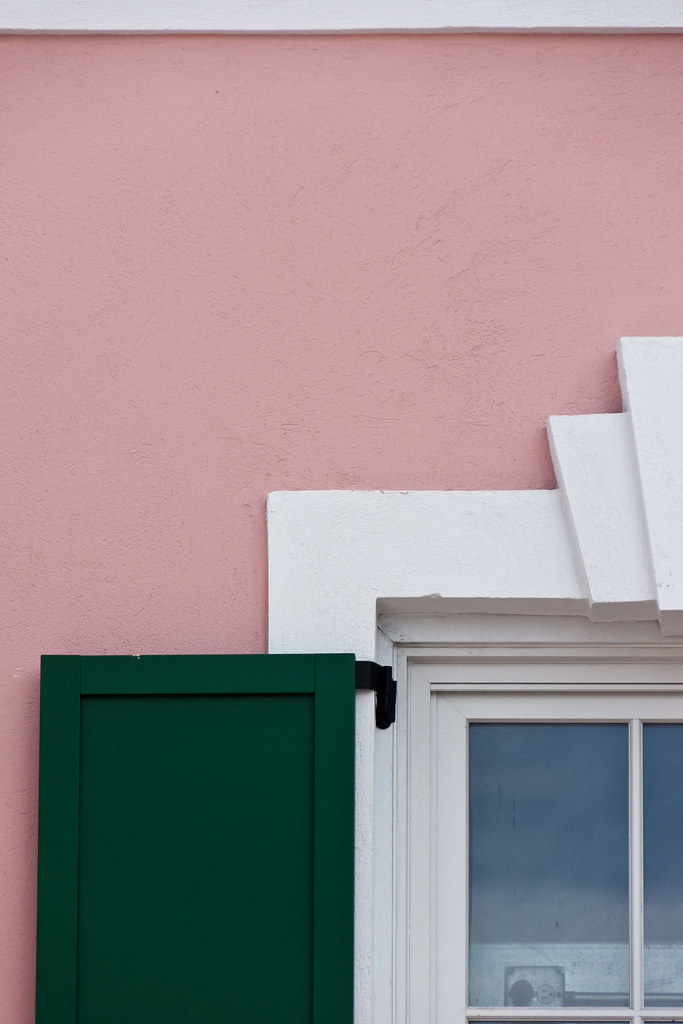
Above: Most of the parliament buildings are painted pink!
By 1713, the sparsely settled Bahamas had become a pirate haven for pirate chieftains Thomas Barrow and Benjamin Hornigold. They proclaimed Nassau a pirate republic, establishing themselves as governors, and were joined by Blackbeard, along with women pirates such as Anne Bonny and Mary Read.
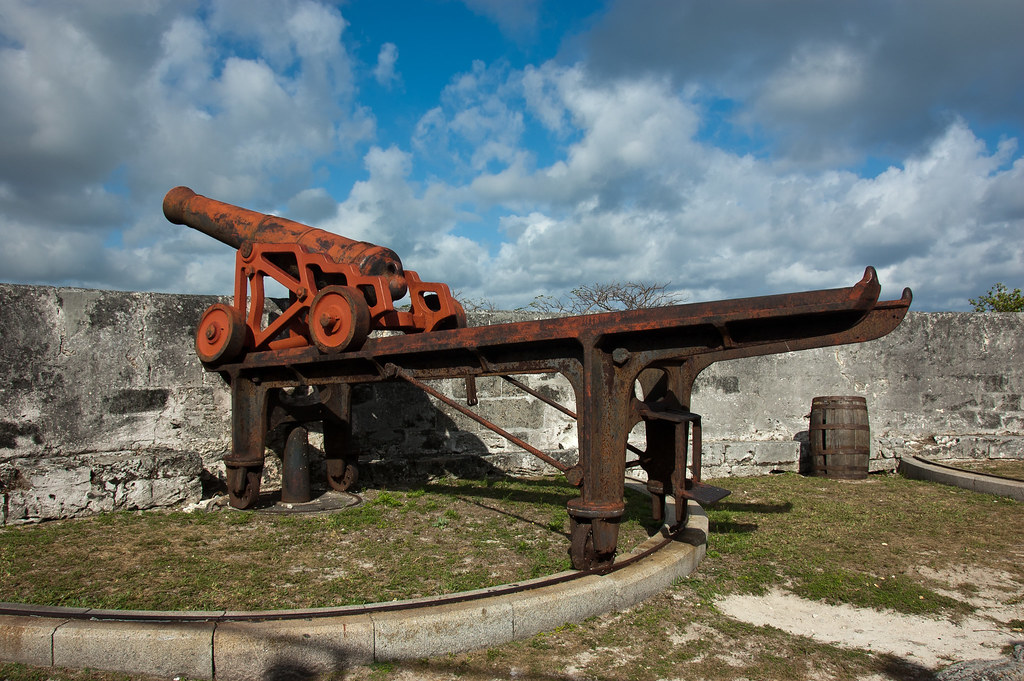
Above: One of the manoeuvrable cannons at Fort Fincastle.
In 1718, the British sought to regain control of the islands and appointed Captain Woodes Rogers as Royal governor. Rogers cleaned up Nassau, even going as far as using his own money to try to overcome problems.
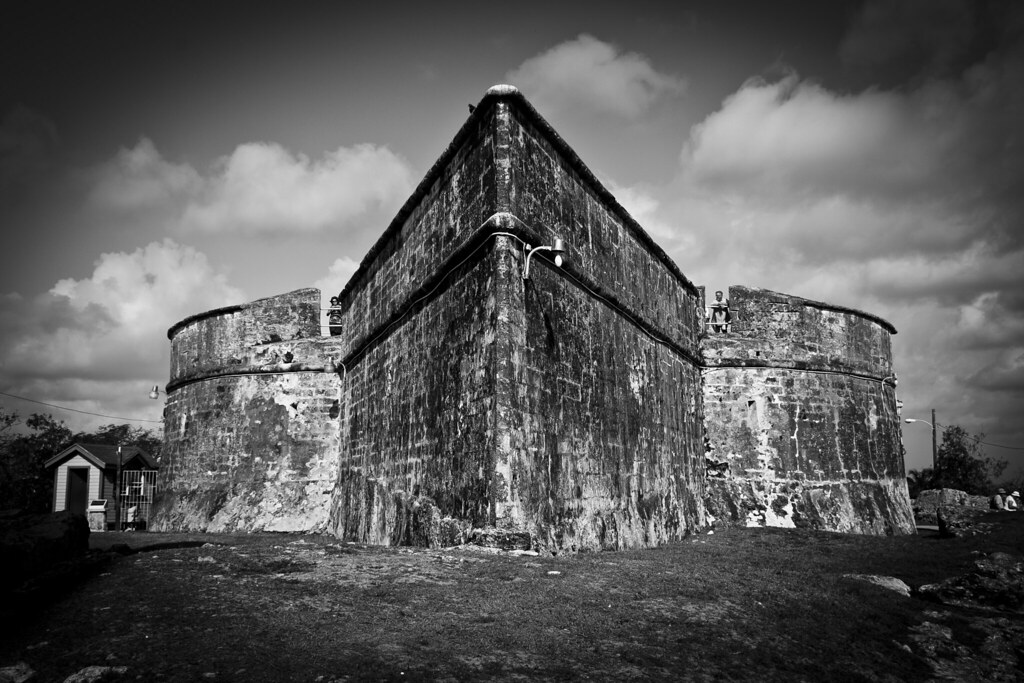
Above: The outside of Fort Fincastle which is shaped like a boat.
One of the most visited attractions in Nassau is the Queen's Staircase. The steps were carved out of solid limestone by slaves sometime between 1793 and 1794; a century later the staircase was renamed to honour the 65 year reign of Queen Victoria as well as her role in helping bring about the abolition of slavery in the Bahamas.

Above: The Queen's Staircase
In 1973, The Bahamas became fully independent, but retained membership in the Commonwealth of Nations.
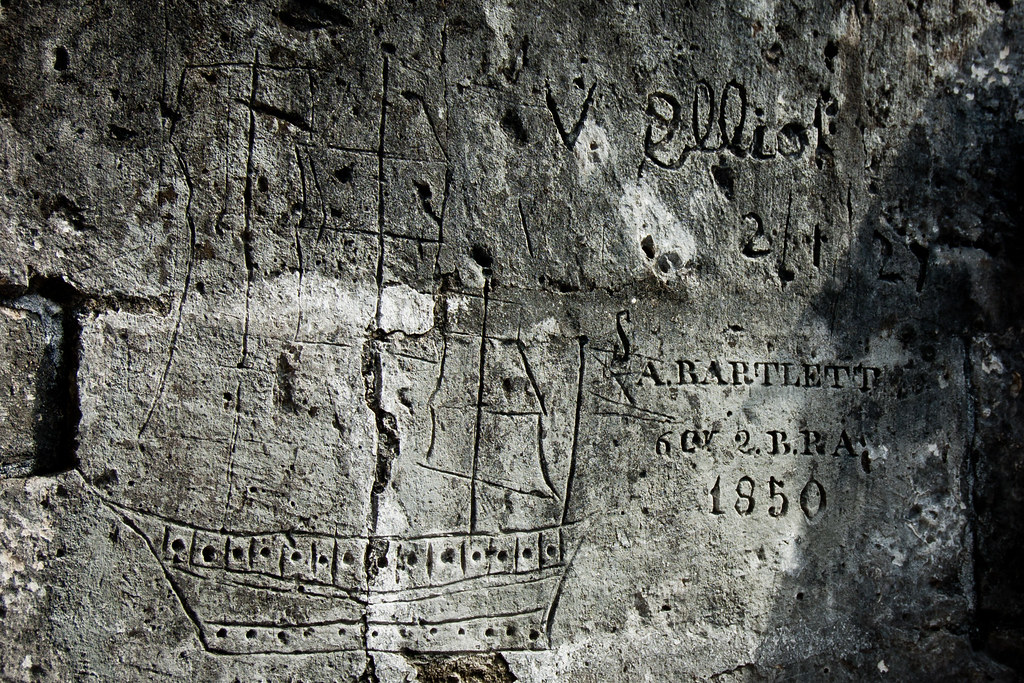
Above: Carvings at Fort Charlotte, built by the British Lord Dunmore who governed the colony from 1787 to 1796.
One of the quirkier attractions in Nassau are the marching flamingos which were featured in National Geographic way back in the 1950s (presumably not the same birds...). I'll leave you with a picture of the show they put on for us:
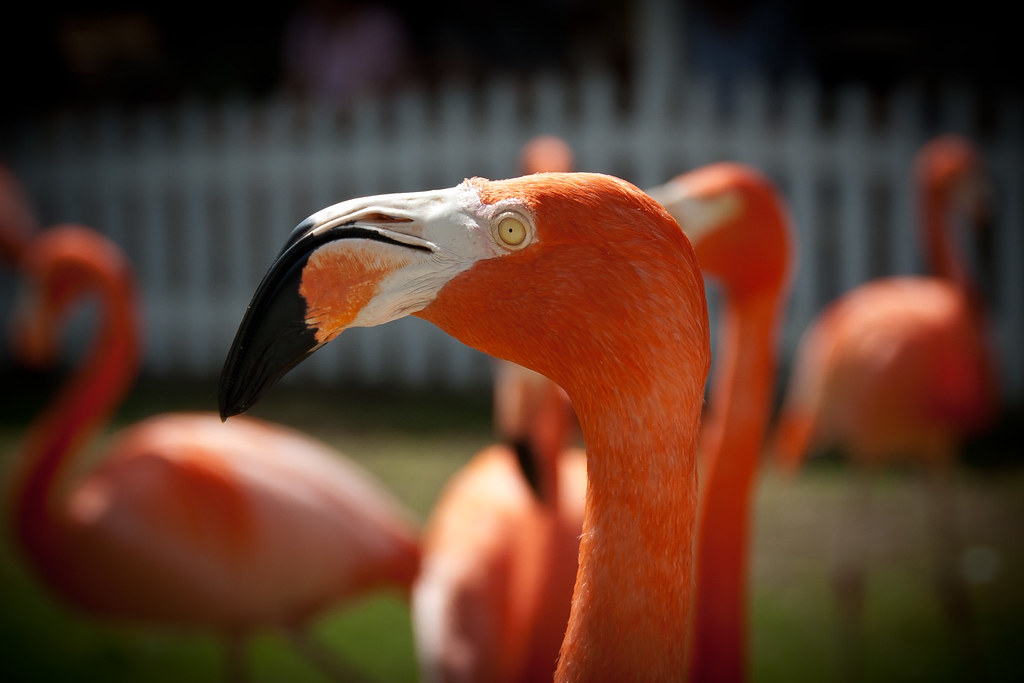

No comments:
Post a Comment